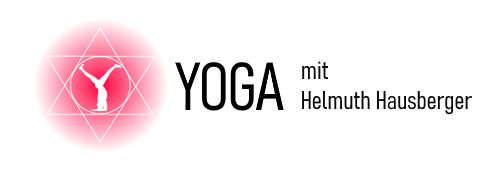Yoga
The word "yoga" in Sanskrit is related to the English word "yoke". Yoga means yoking, that is connecting the individual, finite ego (jiva-atman) to the highest infinite self (parama-atman), union with the source of life.
In the Katha-Upanisad the word "yoga" is mentioned for the first time (third century BCE), where it is revealed to the boy Naciketas by Yama, god of death, as a means to leave behind pleasure and pain and overcome death itself.
The Svetasvatara-Upanisad (also third century BCE) outlines a procedure in which the body is maintained in an upright posture while the mind is brought under control by the restraint of the breath.
The much later Maitri-Upanishad describes a six-fold method of yoga: (1) breath control (pranayama), (2) withdrawal of the senses (pratyahara), (3) meditation (dhyana), (4) placing of the concentrated mind (dharana), (5) philosophical inquiry (tarka), (6) absorption (samadhi).
From Upanishadic Yoga developed numerous practices and methods aiming at transcending the human condition. The heritage of Yoga was usually passed on from teachers to pupils. Various ways of liberation evolved, of transcending the ego (ahamkara, i.e. the ego-maker) towards the self (atman or purusha).
The Bhagavad Gita points out three paths of yoga: The first is karmayoga, in which one gives up the fruit of one`s action to the divine source personified by Krishna. The second is the path of devotion (bhaktiyoga) in which one`s devotion to Krishna liberates one from worldly suffering. The third is the path of knowledge (jnanayoga), which liberates through the discrimination of the true nature of self and universe.
In the Yoga Sutra ascribed to Patanjali (c. 250 CE) yoga is defined as: "yogas citta vrtti nirodhah" (yoga is the calming down of the movements of the consiousness). This text forms the basis of what is known as "Classical Yoga". Patanjali identifies 8 stages, or limbs, of yoga practice: (1) Yama, ethical principles, having to do with one`s relationship to society: Ahimsa, nonviolence; satya, truthfulness; asteya, nonstealing; Brahmacharya, moderation in sense pleasures; Aparigraha, noncovetousness; (2) Nijama, personal disciplines: Saucha, purity; Santosha, contentment, being satisfied; Tapas, effort or discipline; Svadhyaya, introspection and study; Ishvara-pranidhana, dedication to a supreme being. (3) Asana, posture or physical exercises; (4) Pranayama, breathing exercises; (5) Pratyahara, withdrawal of the senses; (6) Dharana, concentration, contemplation; (7) Dhyana, meditation; (8) Samadhi, highest collectedness, union with the Absolute.
Hatha-Yoga: Hatha means "forceful", but is also interpreted as the union of the internal sun (ha) and moon (tha). Hatha-Yoga aims at self-realisation by cultivating and refining the body through practising Asanas (postures) and Pranayamas (extending the breath and other special breathing exercises) and meditation.

Mark Singleton could show in his book "Yoga Body, The Origins of Modern Posture Practice" (2010) that modern, transnational Yoga is a synthesis between modern forms of physical culture and gymnastics on the one hand and traditional Indian Hatha-Yoga-Asanas and Pranayamas on the other.
Tirumalai Krishnamacharya (1888-1989) is usually considered as the father of modern Yoga. His son Desikachar, Pattabhi Jois, A.G. Mohan, Srivatsra Ramaswami, Indra Devi and his brother-in-law BKS Iyengar are his most famous students.
BKS Iyengar (1918-2014) turned out to become the most outstanding personality among them.
Iyengar`s books "Light on Yoga", "Light on Pranayama", "The Tree of Yoga" and "Yoga - The Path to Holistic Health" were translated into many languages and became pillars among modern Yoga literature.
After many decades of intensive Yoga practice and teaching experience Iyengar became one of the most prominent figures of modern Yoga in the world. Nevertheless he remained down-to-earth, saying: "I am only a child in Yoga!"
His final recommendation: "My ending should be your beginning!"
Recommended Books
Susanne Schmida: Es sind die Götter (1951)
Susanne Schmida: Perspektiven des Seins (4 Bände: 1968-1976)
BKS Iyengar: Yoga Wisdom and Practice (2009)
BKS Iyengar: Light on Life (2005)
BKS Iyengar: Yoga - The Path to Holistic Health (2001)
BKS Iyengar: Light on the Yoga Sutras of Patanjali (1990)
BKS Iyengar: The Tree of Yoga (1988)
BKS Iyengar: Light on Pranayama (1984)
BKS Iyengar: Light on Yoga (1966)
Geeta S. Iyengar: Yoga - A Gem for Women (1983)
Dona Holleman: Centering Down (1981)
Elliot Goldberg: The Path of Modern Yoga - The History of an Embodied Spiritual Practice (2016)
Richard Freeman: The Mirror of Yoga - Awakening the Intelligence of Body and Mind (2010)
Mark Singleton: Yoga Body: The Origins of Modern Posture Practice (2010)
Maxine Tobias, Mary Steward: The Yoga Book (1986)
Loren M. Fishman, Ellen Saltonstall: Yoga for Arthritis (2008)
Luise Wörle, Eric Pfeiff: Yoga As Therapeutic Exercise (2010)
Georg Feuerstein: The Yoga Tradition (1998)
Suza Francina: The New Yoga for People Over 50 (1997)
Janet Balaskas: Preparing for Birth with Yoga (1994)
Karl Baier: Yoga auf dem Weg nach Westen (1998)
Karl Baier: Meditation und Moderne (2009)
Desikachar: The Heart of Yoga (1995)
A. G. Mohan: Yoga for Body, Breath and Mind (1993)
Vanda Scaravelli: Awakening the Spine (1991)
Silva, Mira, Shyam Mehta: Yoga - the Iyengar Way (1990)
Erich Schiffmann: Yoga - The Spirit and Practice of Moving into Stillness (1996)
Jean Couch: The Runner's Yoga Book (1990)
Donald Moyer: Yoga: Awakening the Inner Body (2006)
Mabel E. Todd: The Thinking Body (1936)
